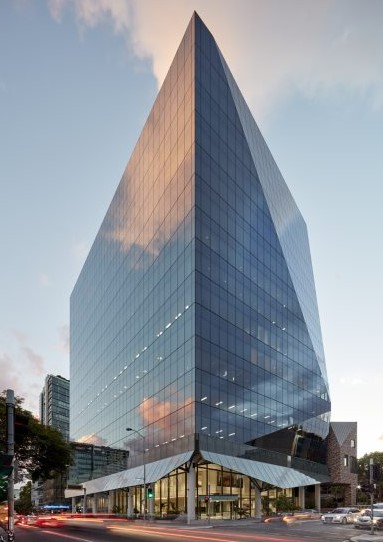Impacts of ESG and sustainable buildings on commercial property: PFA Master Class
 Huge change is ahead for commercial property and property funds as governments and corporates sign up to Net Zero targets and drive the push toward sustainable buildings, according to Annabel McFarlane, Head of Strategic Research - Australia at JLL.
Huge change is ahead for commercial property and property funds as governments and corporates sign up to Net Zero targets and drive the push toward sustainable buildings, according to Annabel McFarlane, Head of Strategic Research - Australia at JLL.
Ms McFarlane delivered a presentation on sustainable buildings at the Property Funds Association’s recent PFA Master Class series, and said where we are in the cycle will create opportunity and accelerate sustainability.
“Governments are thinking about climate change, and working on getting cities to carbon neutral status, using both carrot and stick approaches. There is a major link between our emissions and our buildings, and if anyone can change things, it’s property. JLL now has a whole team reporting on sustainable buildings.
“It’s worth looking overseas to understand what’s ahead in major Australian centres such as Sydney and Melbourne. For example, New York City and London currently have more targeted environmental requirements for real estate assets than we see in Australia.
“Consider that Melbourne has committed to being carbon neutral by 2040, and Sydney by 2035. The closer we get to these deadlines the more regulation will come in. The City of Sydney’s new minimum standards and net zero requirements, introduced this month for new office buildings and major redevelopments, illustrates this point. Other city councils may follow with similar regulation.”
Ms McFarlane said there is also a huge push towards sustainable buildings from corporates as they also adopt net zero strategies – approximately 69% of corporates are expected to commit to science-based targets by 2025.
“With more corporates committing to change this impact will flow through to office. A bigger spread is likely between premium CBD and second-grade rents as green buildings become more in demand.
“You can also get better insurance and financing for green buildings.”
Yet there is still some way to go as currently only 56% of all Australian office assets have a NABERS rating, and few of these are six star assets. “This will need to change as governments and corporates drive demand for greener buildings.”
Underlining the task ahead, Ms McFarlane said the Victorian government had announced it wants all new government office buildings and tenancy fit-outs to have a minimum five stars energy efficiency rating from 2021 and a six stars rating from 2025. “This will be a huge challenge and is obviously a huge advantage for property owners who have a six star asset. However, given the scarcity of these assets, the government will need to work in partnership with landlords committed to upgrade their assets over an agreed timeframe. We anticipate that ‘green lease’ structures will become more commonplace.
“To meet targets by 2050 we need to retro fit 3% of buildings a year, so the change required is immense.”
ESG now mainstream
Jenine Cranston, Partner and Head of ESG at Knight Frank, said at a recent PFA Master Class that “ESG has hit the mainstream in commercial property. The built environment is thought to account for approximately 40% of the world’s greenhouse gas emissions.”
Ms Cranston referred to research from Knight Frank’s Active Capital Report which assessed the impact of a NABERS energy rating of five stars-plus across 300 commercial transactions. The research showed these buildings attracted up to a 17.9% premium on the sales price, compared to an 8.3% premium on lower rated buildings.
“In addition, there is a larger buyer pool, and a broader leasing market for green buildings, reflecting a shift to accredited and more sustainable assets in the market.
“While there is fast growing interest in ESG, transformational thinking is required to have the most effective impact in lowering emissions to meet Net Zero targets”, Ms Cranston said. “Fund managers are central to driving the ESG agenda and ensuring the widespread demands from capital are realised.
“But audacious collaboration is key to success as no-one has all the answers. More needs to be done to define measurement of performance.
“These are critical questions as nobody wants to be invested in stranded assets when you can plan around ESG and sustainability now.”
Image: Charter Hall
